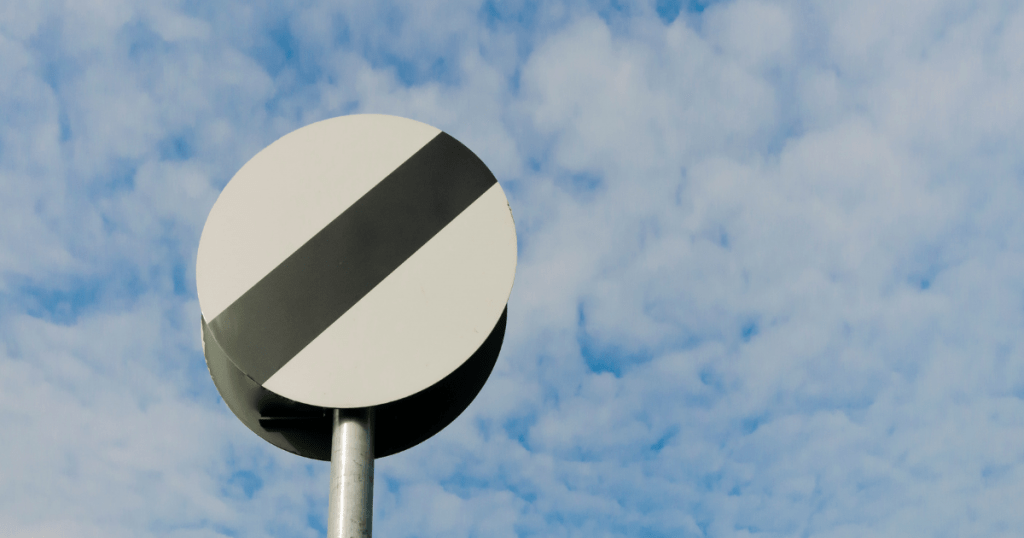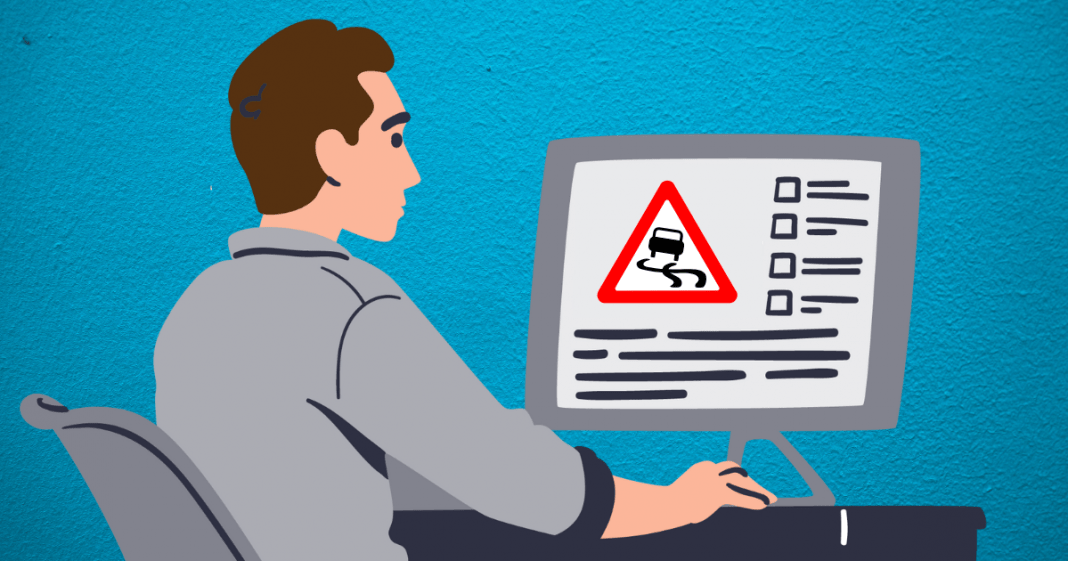Last Updated on May 1, 2025
Preparing for your UK driving theory test can feel overwhelming, especially with the pressure to pass first time so that you can book your practical driving test. With so many learner drivers preparing for their theory test and with a lot of information to take in, it’s important to break things down into manageable, easy-to-understand guidance.
In this blog, we’ll discuss what to expect in the driving theory test, provide example questions, and help you understand how to answer them correctly. Whether you’re just starting your driving journey or revising for an upcoming test, our theory practice questions will give you the knowledge as to what you can expect and what you need to know. These examples reflect the type of questions that regularly appear in theory tests and are designed to give you realistic insight into the format and content of the multiple-choice section.

What is the Theory Test?
The UK driving theory test is a mandatory assessment for learner drivers, designed to evaluate your knowledge of road rules, traffic signs, and safe driving practices. It’s a critical step before taking the practical driving test and it must be completed before you book your driving test.
The test comprises two parts:
- Multiple-choice questions: 50 questions to be answered in 57 minutes, with a required pass mark of 43 correct answers.
- Hazard perception test: 14 video clips featuring everyday road scenarios, requiring you to identify developing hazards. A minimum score of 44 out of 75 is needed to pass.
Some of the Most Common Theory Test Questions
Below are ten common questions you might encounter in the theory test, along with explanations as to what is being asked, and with answers to help you prepare effectively.
Question 1: What should you do when approaching a zebra crossing?
- What this is asking: This question assesses your understanding of pedestrian crossings and the appropriate driver response.
- Answer: You should slow down and prepare to stop if pedestrians are waiting to cross. Always give way to pedestrians on a zebra crossing as this is a legal requirement.
Question 2: What does a red traffic light mean?
- What this is asking: This tests your knowledge of traffic light signals and their meanings.
- Answer: A red light means you must stop and wait behind the stop line until the light turns green.
Question 3: When can you use your horn?
- What this is asking: This question evaluates your understanding of appropriate horn usage.
- Answer: You can use your horn to alert others of your presence, but not between 11:30 pm and 7:00 am if you are in a built-up area. The only exception to this is if another road user poses a danger.
Question 4: What is the national speed limit on a single carriageway road for cars and motorcycles?
- What this is asking: This assesses your knowledge of speed limits on different types of roads.
- Answer: The national speed limit on a single carriageway road is 60 mph for cars and motorcycles.

Question 5: What should you do if you see a pedestrian with a white stick and red band?
- What this is asking: This tests your awareness of signs indicating disabilities.
- Answer: A white stick with a red band indicates the pedestrian is visually impaired and has hearing difficulties. You should take extra care and be prepared to stop.
Question 6: How should you overtake a cyclist?
- What this is asking: This evaluates your knowledge of safe overtaking practices.
- Answer: You should leave plenty of room, ideally at least 1.5 metres, and overtake slowly and carefully. If this in a single lane and you are required to go into the oncoming lane, ensure you have full visibility ahead and there is no oncoming traffic.
Question 7: What does a circular traffic sign with a red border mean?
- What this is asking: This question assesses your understanding of traffic sign shapes and colours.
- Answer: A circular sign with a red border gives an order, usually prohibitive, such as speed limits or no entry.
Question 8: What should you do if your vehicle starts to skid on a slippery road?
- What this is asking: This tests your knowledge of vehicle control in adverse conditions.
- Answer: You should steer gently in the direction of the skid and avoid sudden braking or acceleration.
Question 9: When are you allowed to use fog lights?
- What this is asking: This evaluates your understanding of appropriate fog light usage.
- Answer: Fog lights should only be used when visibility is seriously reduced, generally when you can’t see more than 100 metres ahead.
Question 10: What does a broken white line in the centre of the road indicate?
- What this is asking: This assesses your knowledge of road markings and their meanings.
- Answer: A broken white line indicates that you may overtake if the road ahead is clear, but you should do so with caution and only if you have full visibility.
Conclusion
Understanding the structure and content of the driving theory test is one of the most effective ways to prepare. Not only do you need to know the answers, but also why these questions are important and how they can help you be a safer driver. As we’ve seen, many questions test not just your road sign knowledge or memory, but your practical understanding of real-world driving situations. By regularly reviewing theory practice questions and using a variety of available resources, you’re taking vital steps towards passing your test and becoming a safe and responsible driver.
FAQs
The theory test consists of 50 multiple-choice questions. You must answer at least 43 correctly to pass.
Once you pass the theory test, your certificate is valid for two years. If you don’t pass your practical test within this period, you’ll need to retake the theory test.
The test covers various topics, including road signs, traffic laws, hazard perception, and safe driving practices.
There are multiple theory test revision methods online. You can use official DVSA practice materials, online mock tests, and mobile apps designed to simulate the test environment, such as the RoadHow app.
Yes, if you fail your theory test, you can retake it after a minimum waiting period of three working days. You’ll need to rebook the test and pay the test fee again









